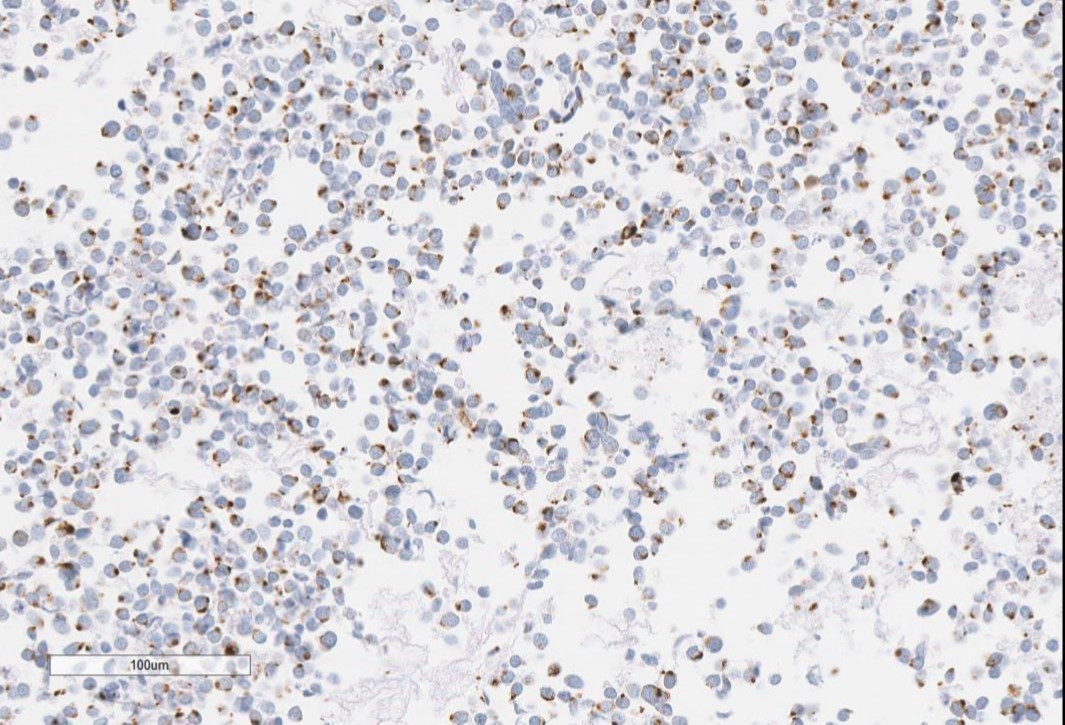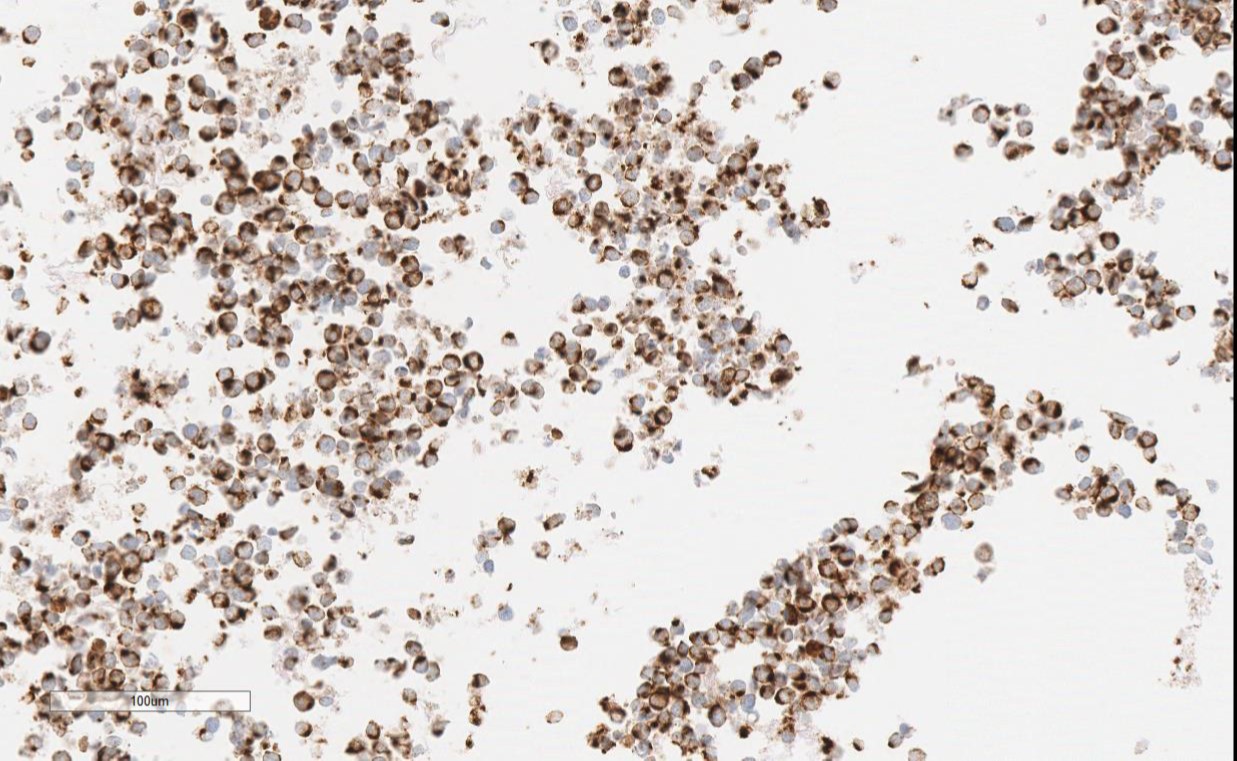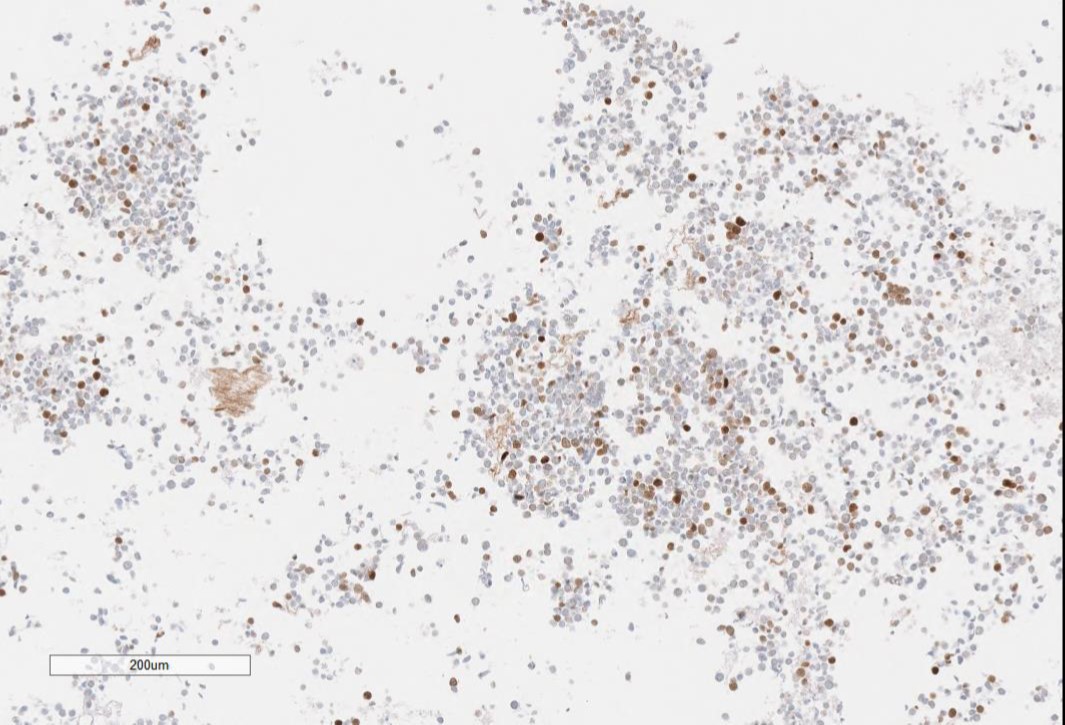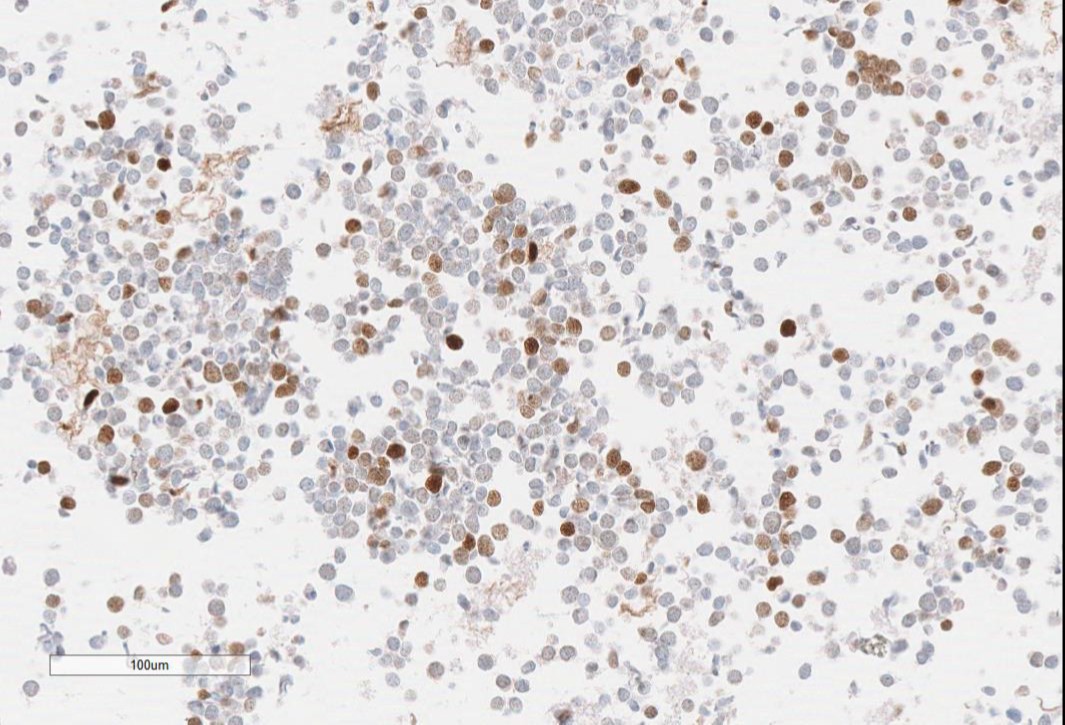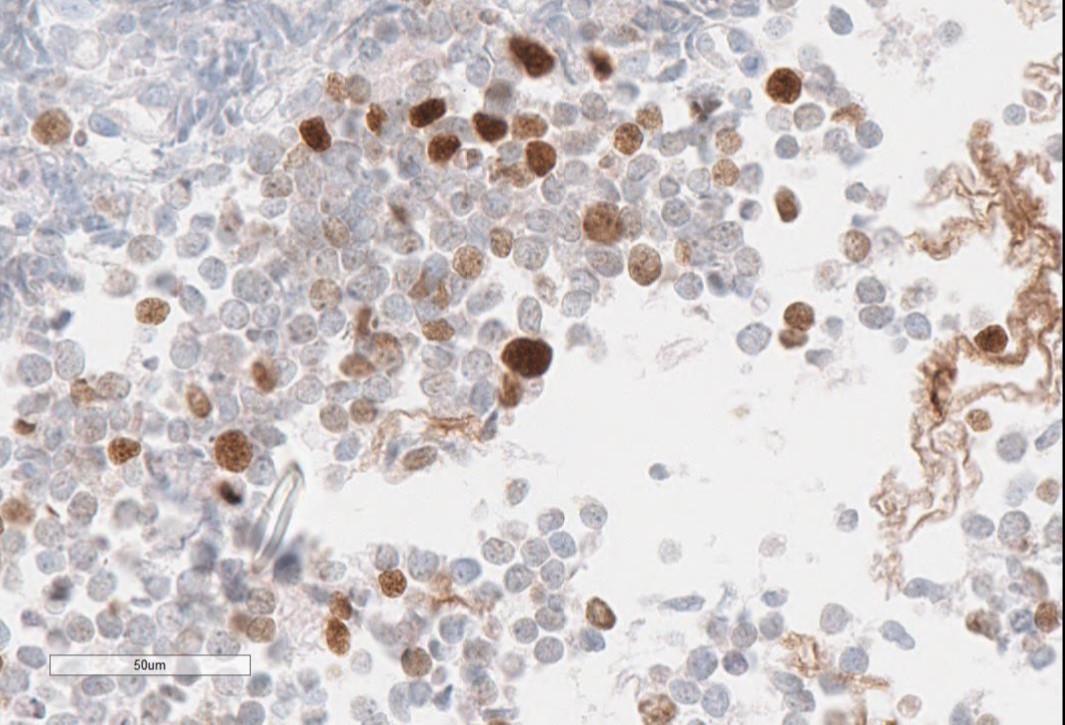Quiz Summary
0 of 3 questions completed
Questions:
Information
You have already completed the quiz before. Hence you can not start it again.
Quiz is loading…
You must sign in or sign up to start the quiz.
You must first complete the following:
Results
Results
0 of 3 questions answered correctly
Your time:
Time has elapsed
You have reached 0 of 0 point(s), (0)
Earned Point(s): 0 of 0, (0)
0 Essay(s) Pending (Possible Point(s): 0)
Categories
- Not categorized 0%
-
 Canadian Society of Cytopathology
Canadian Society of Cytopathology
Case of the Month
Case and discussion contributed by:
Drs. Thai Yen Ly, Jennifer Merrimen and Cheng Wang
Department of Pathology and Laboratory Medicine
QEII Health Science Center and Dalhousie University
Halifax, NS, Canada
Discussion:
Merkel cell carcinoma (MCC) is a rare but aggressive primary neuroendocrine carcinoma of the skin with a high propensity for local recurrence and metastasis. Risk factors for MCC development include advanced age, chronic UV exposure, light skin complexion, and immune suppression. In 2008, Feng and colleagues discovered a novel human polyomavirus was clonally integrated in the majority of MCCs studied. To date, Merkel cell polyomavirus (MCPyV) is the only known human oncogenic polyomavirus. MCPyV is ubiquitous, and exposure likely occurs in early life, but the relative rarity of MCC and identification of virus-negative MCCs highlight the importance of oncogenic co-factors, with immune suppression (iatrogenic, disease or age-related) and UV-induced mutagenesis playing significant roles. Indeed, it is now recognized that MCC develops via two primary pathways, the majority being viral-mediated and the remainder UV-mediated. PCR and immunohistochemistry (IHC) are the most common methods for detecting tumor-associated MCPyV. CM2B4 is the most broadly used monoclonal antibody for this purpose and is both sensitive and specific in formalin-fixed paraffin-embedded tissue. A nuclear pattern of immunoreactivity in MCC indicates MCPyV large T antigen expression (virus-positivity).
In our case, the FNA of the groin lymph node is satisfactorily cellular and composed of discohesive tumor cells with high nuclear to cytoplasmic ratio and salt/pepper chromatin with only occasional visible small nucleoli. The cytomorphology belongs to the category of small blue cells, and in adult patients, the differential diagnosis includes mainly lymphoma, melanoma, Merkel cell carcinoma, and small cell carcinoma. On cytopathology, the distinction between these entities can be challenging due to overlapping features. The clinical, cytomorphological and immunohistochemical characteristics of the current tumor are consistent with metastatic MCC involving the lymph node.
The final diagnosis of Merkel cell carcinoma requires immunohistochemistry and clinical information. MCC is classically positive for broad-spectrum cytokeratins (AE1/AE3 and CAM5.2; paranuclear and/or cytoplasmic pattern), CK20 (paranuclear dot pattern), neuroendocrine markers including synaptophysin, chromogranin, NSE and neural markers such as neurofilament (dot-like pattern) and CD56. Importantly, MCC is usually negative for CD45, S100, vimentin, CK7, TTF1, and CDX2. If available, CM2B4 for the detection of tumor-associated MCPyV is helpful as the majority of MCCs are virus-positive. In our case, the cell block of the FNA showed the expected CM2B4 nuclear pattern of immunoreactivity in the tumor cells of a virus-positive MCC.
In summary, the classification of small blue cell tumors is challenging in cytologic specimens, and awareness of the clinical and pathological context, including relevant differential diagnosis, cytomorphology, and appropriate immunohistochemical workup is essential to accurate diagnosis, particularly in the case of Merkel cell carcinoma. We believe MCPyV IHC represents a promising addition to the cytopathologist’s current armamentarium.
References:
- Feng H, Shuda M, Chang Y, Moore PS. Clonal integration of a polyomavirus in human Merkel cell carcinoma. Science. 2008;319(5866):1096-1100.
- Harms PW. Update on Merkel Cell Carcinoma. Clin Lab Med. 2017;37(3):485-501.
- Harms PW, Harms KL, Moore PS, et al. The biology and treatment of Merkel cell carcinoma: current understanding and research priorities. Nat Rev Clin Oncol. 2018;15(12):763-776.
- Li L, Molberg K, Cheedella N, Thibodeaux J, Hinson S, Lucas E. The diagnostic utility of Merkel cell polyomavirus immunohistochemistry in a fine needle aspirate of metastatic Merkel cell carcinoma of unknown primary to the pancreas. Diagn Cytopathol. 2018;46(1):67-71.
- 1
- 2
- 3
- Current
- Review
- Answered
- Incorrect
-
Question 1 of 3
1. Question
Based on this FNA appearance, the differential diagnosis includes which of the following?
CorrectIncorrect -
Question 2 of 3
2. Question
Cell Block H&E 10X
Cell block AE1/3 IHC
Cell block CK20 IHC
Cell block Synaptophysin IHC
Based on these IHC findings, what is the diagnosis?
CorrectIncorrect -
Question 3 of 3
3. Question
An antibody against a virus antigen stains some nuclei of the tumor cells
The previous slides show positive viral IHC staining in the nuclei of affected tumor cells. Name the responsible virus.
CorrectIncorrect



